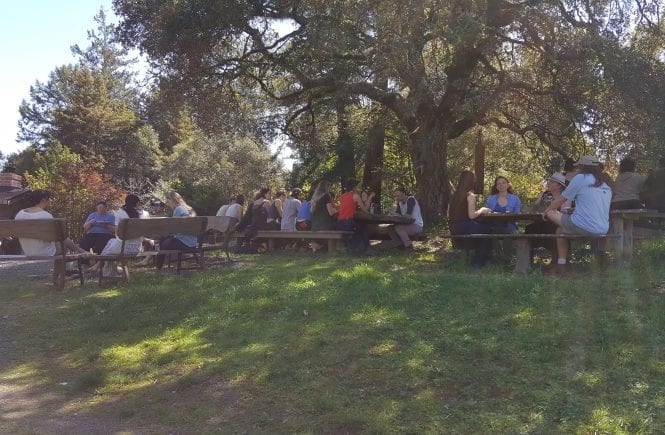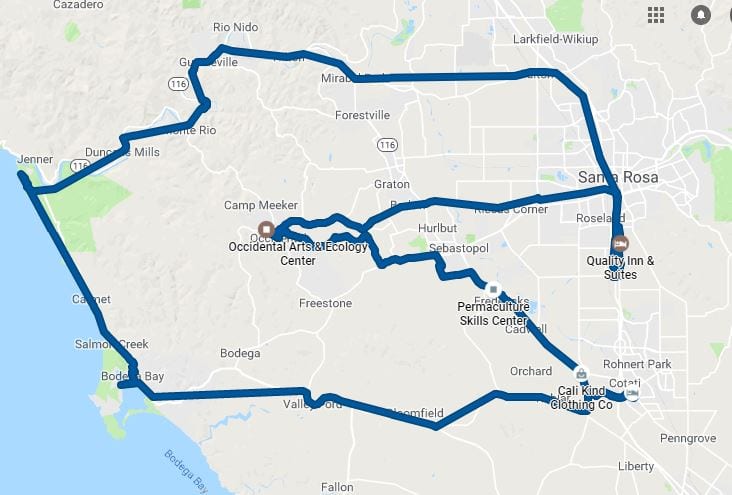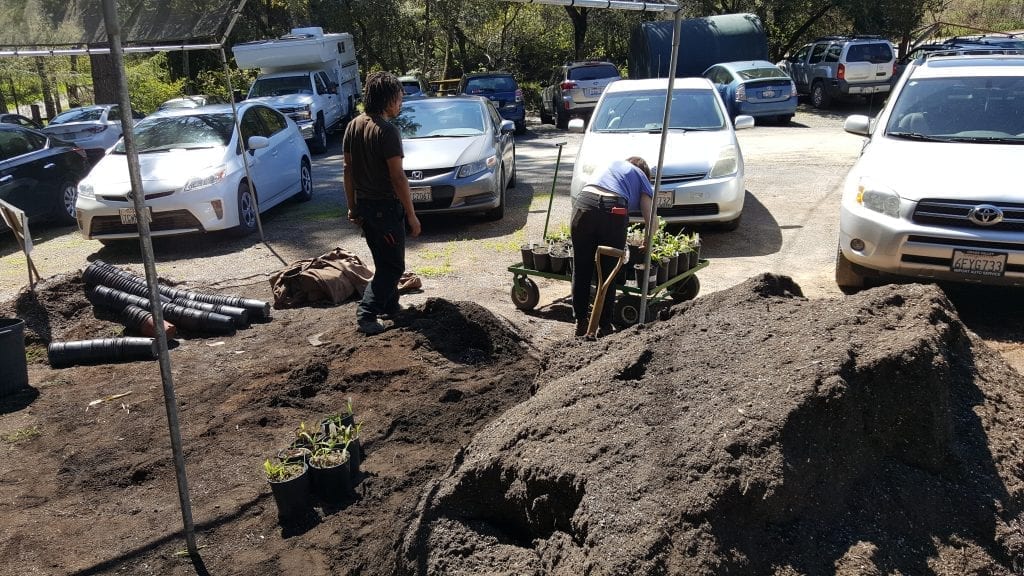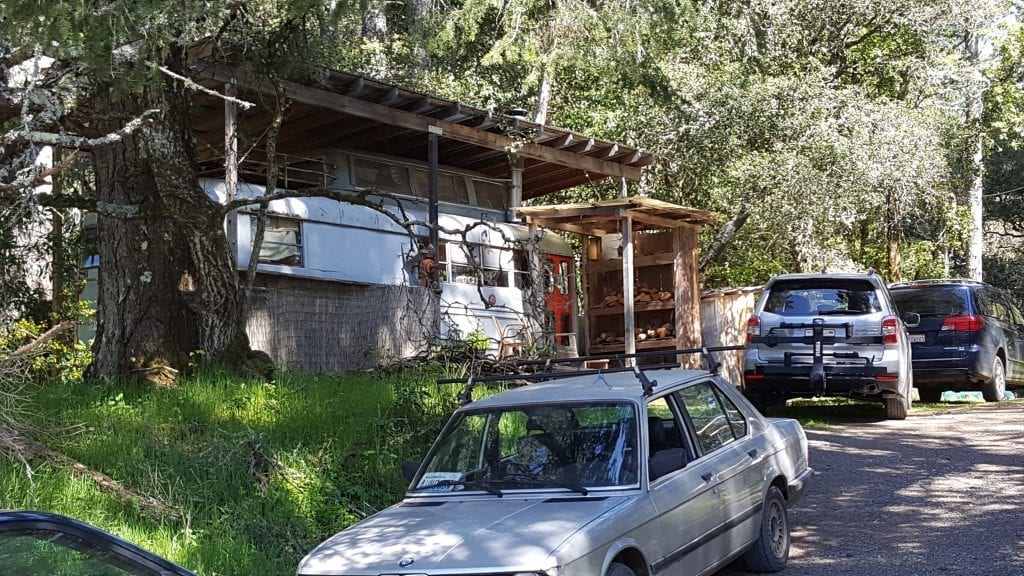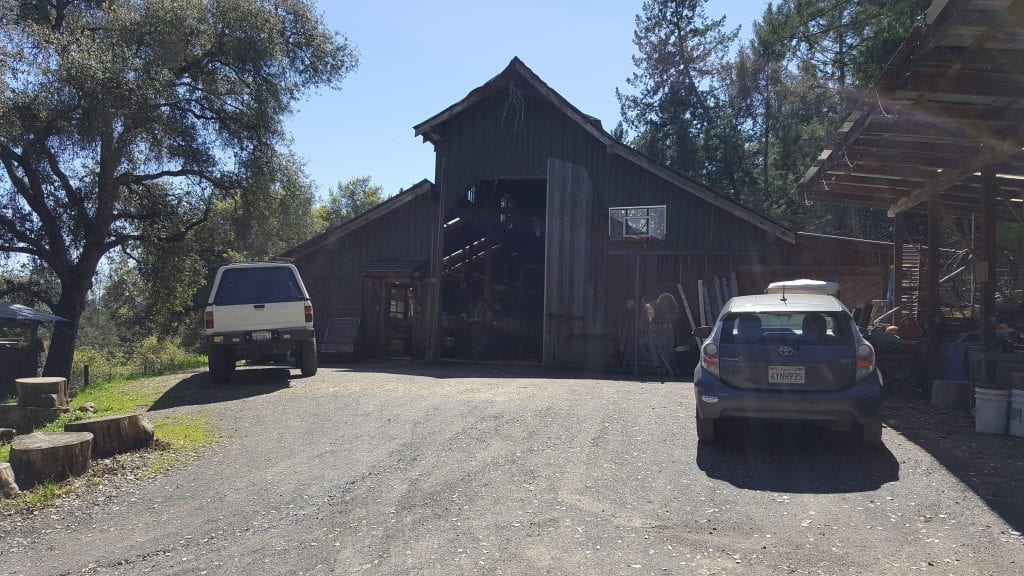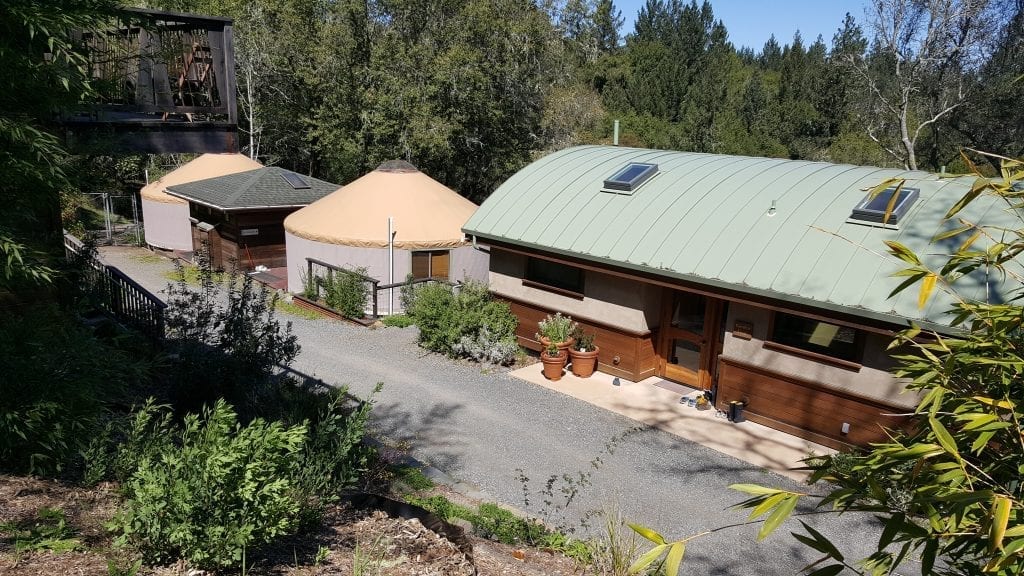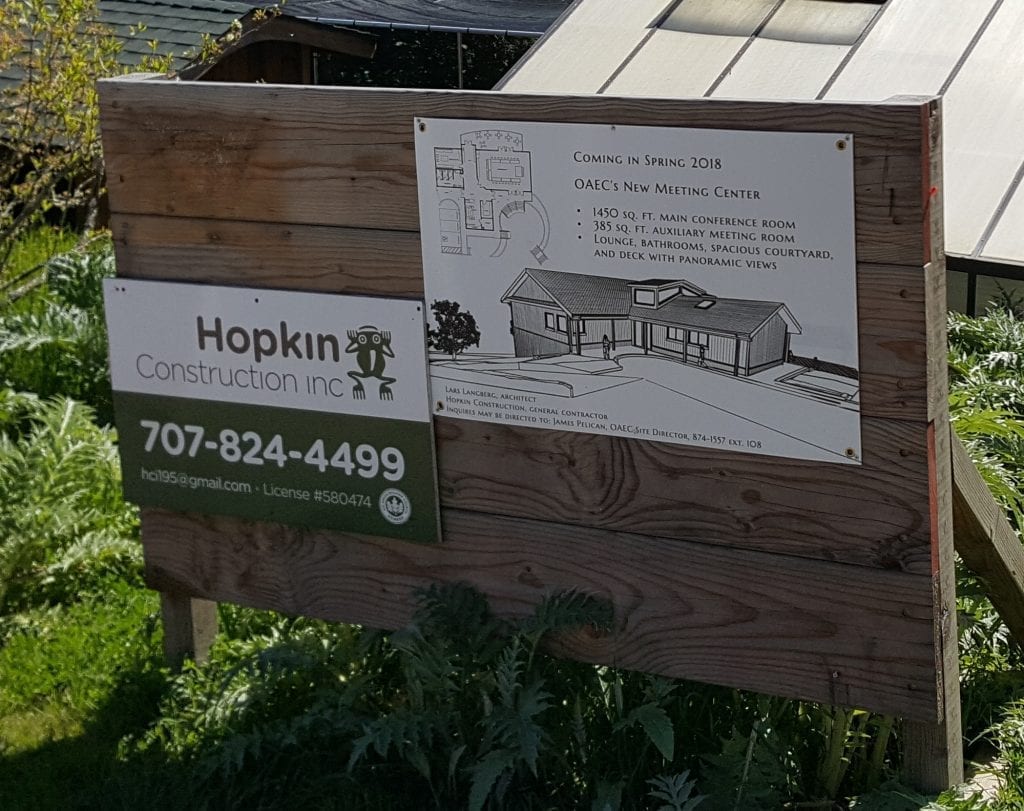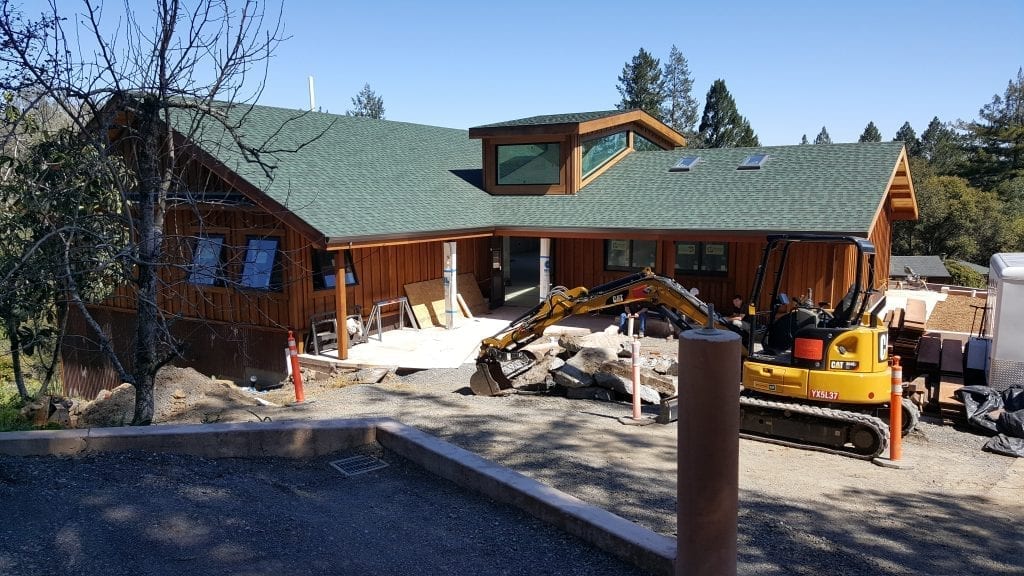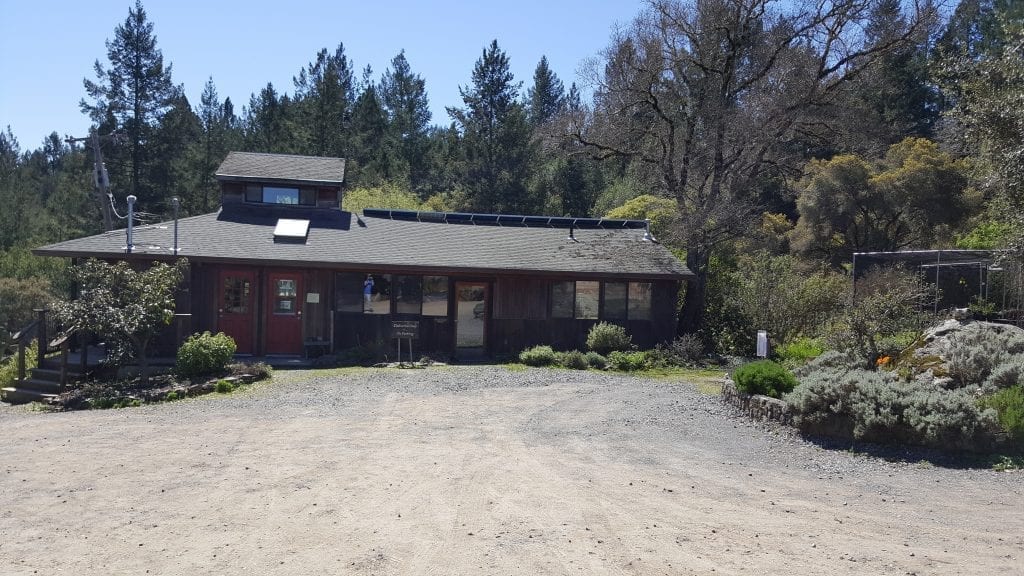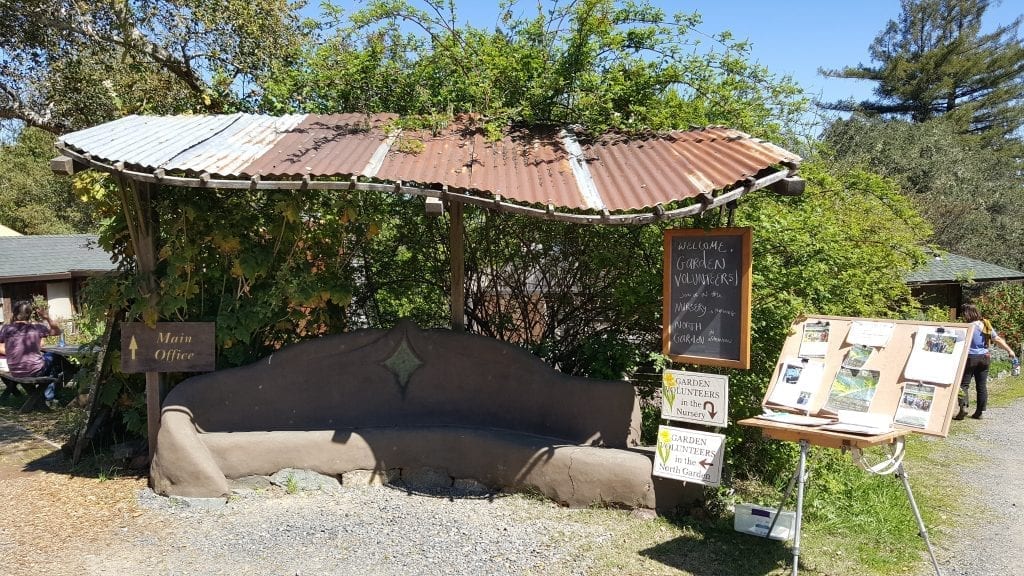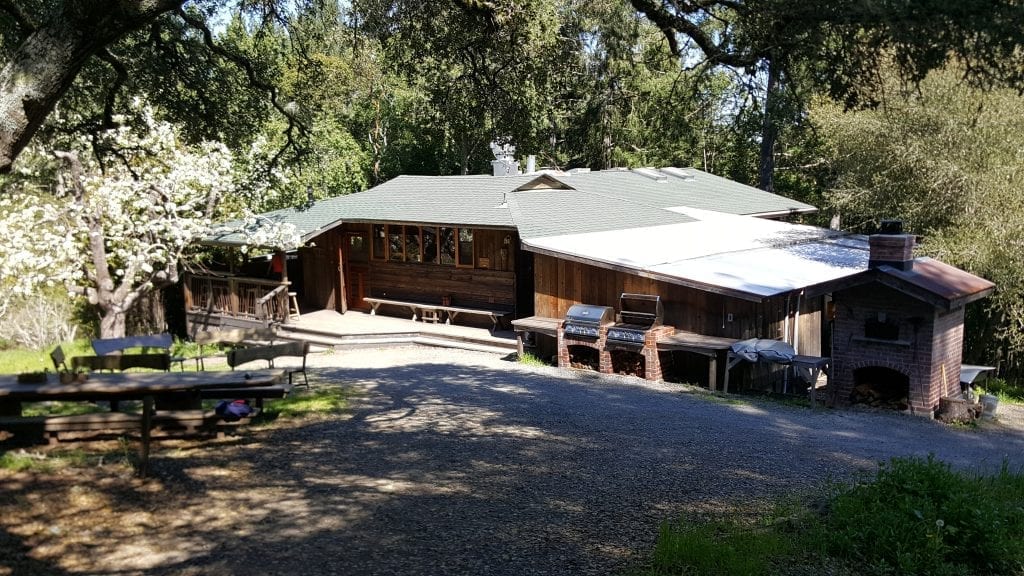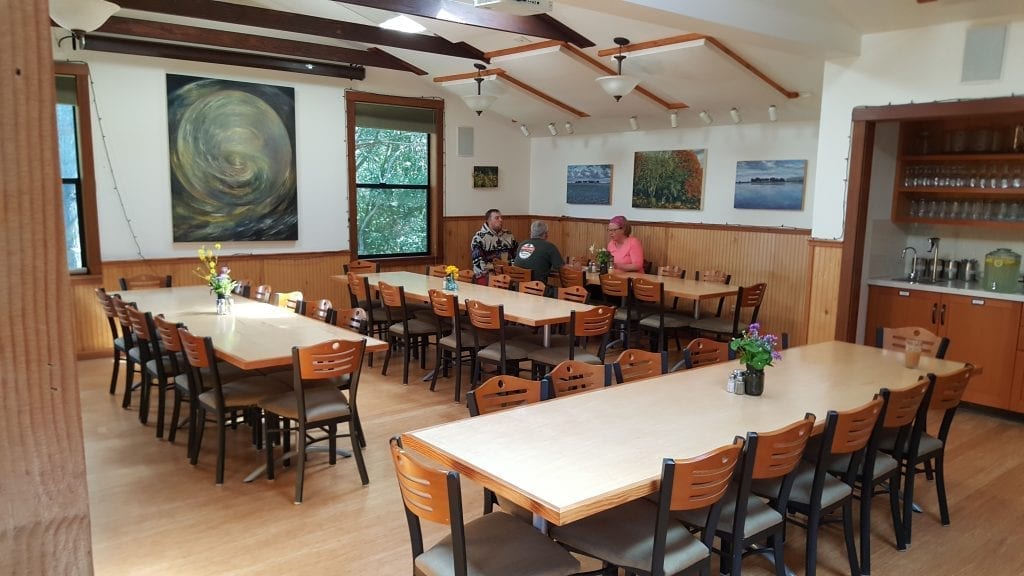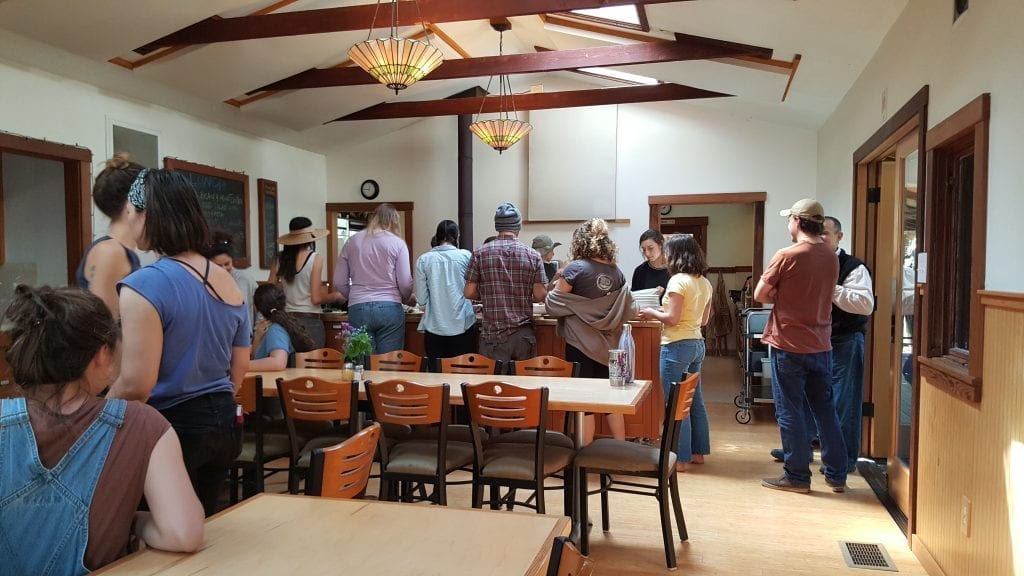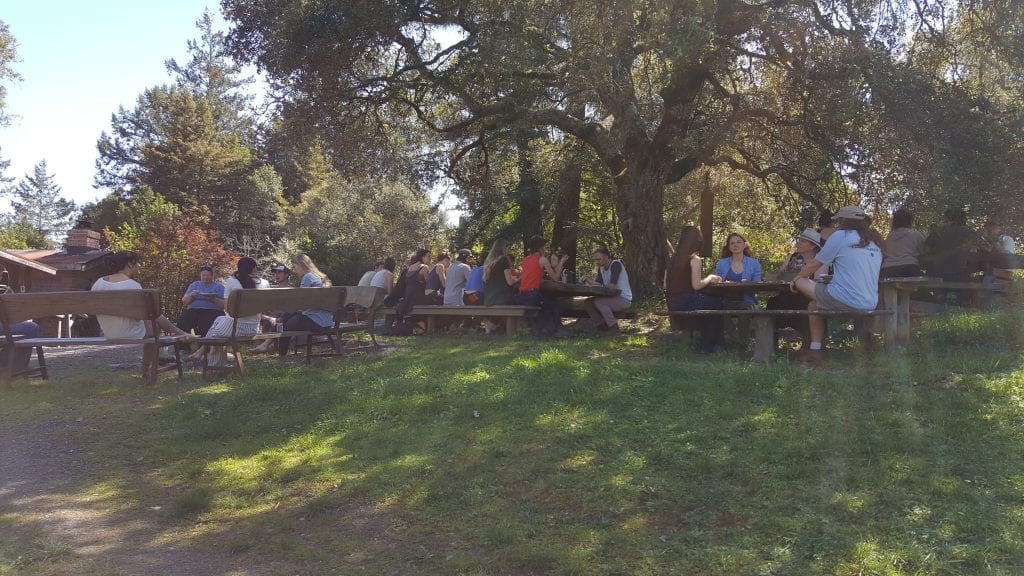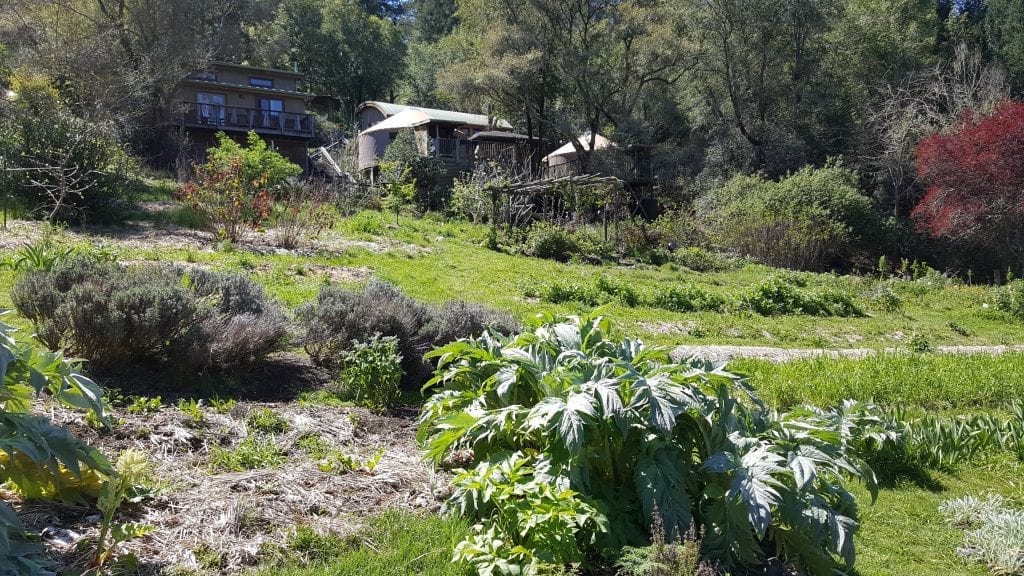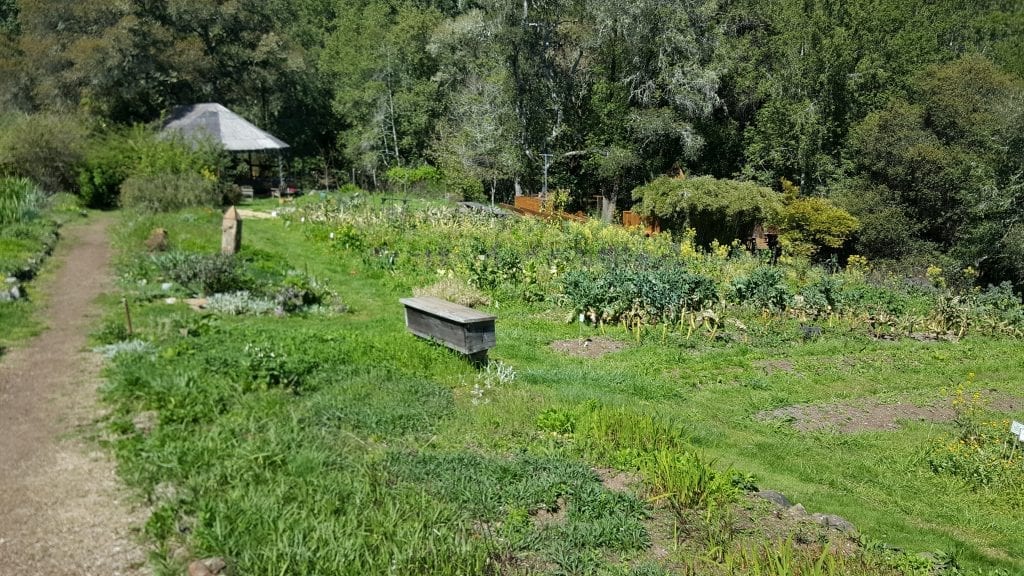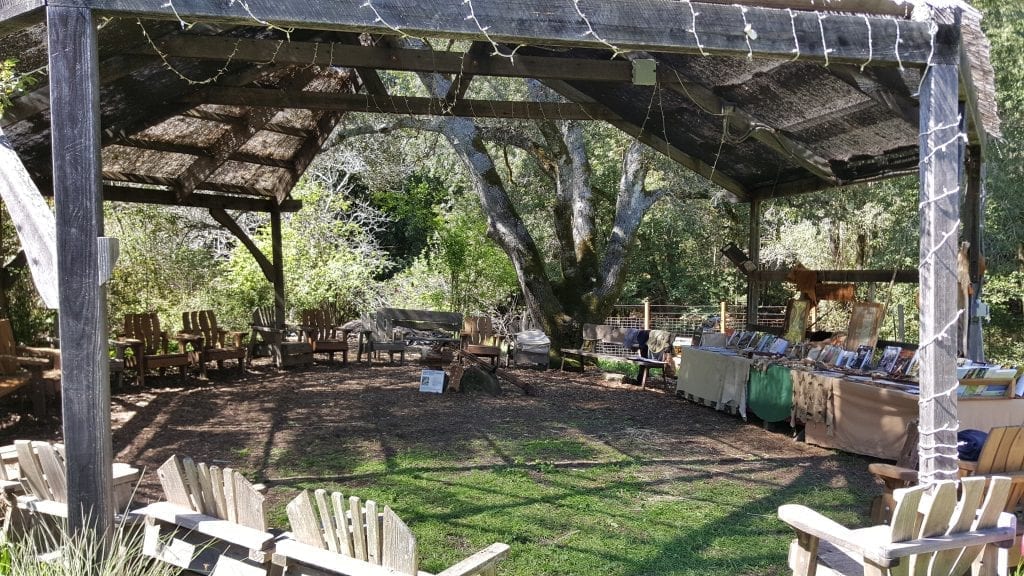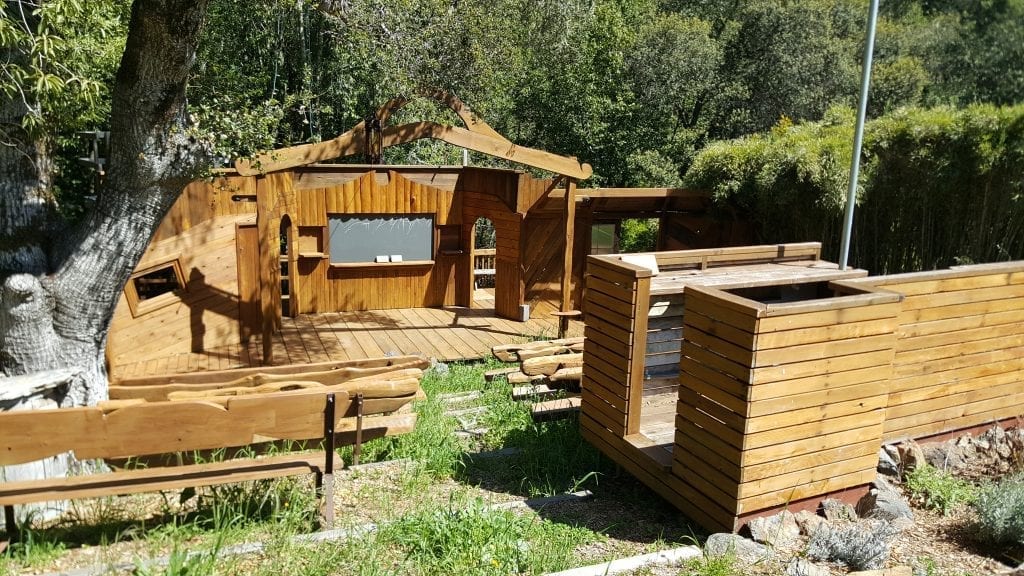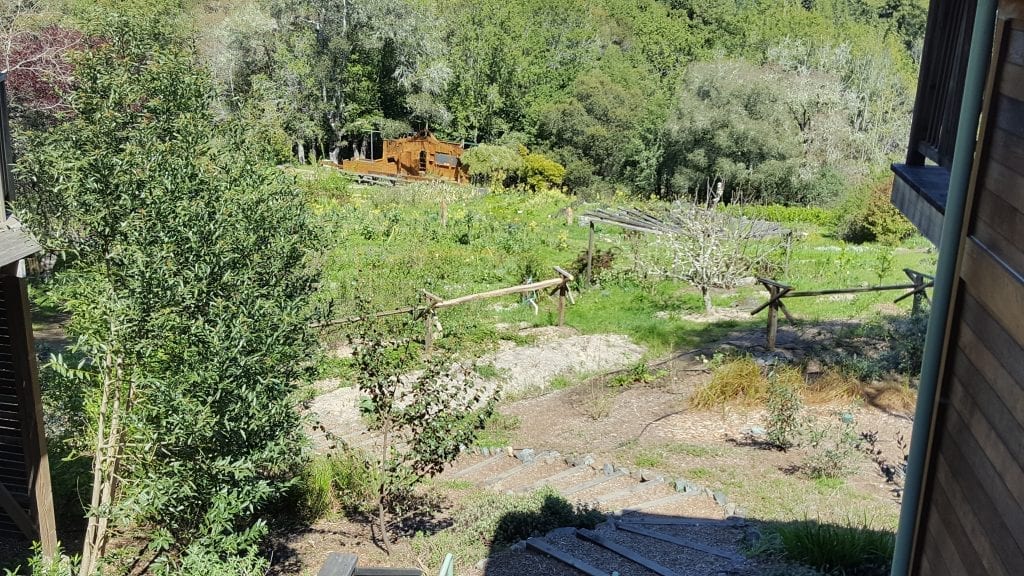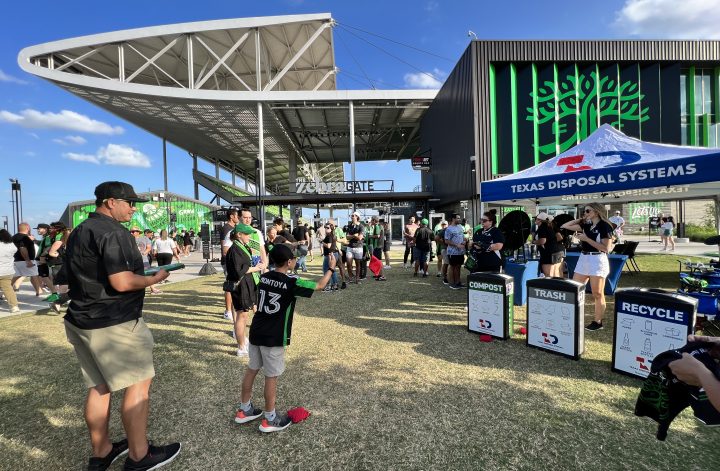Occidental Arts & Ecology Center (OAEC) – Summary:
- Who: N/A
- What: Visited OAEC, worked in the plant nursery and ate with the volunteers
- When: Wednesday, March 28
- Where: Occidental, CA
Quick Resources:
- Occidental Arts & Ecology Center Webpage
- Occidental Arts & Ecology Center Facebook Page
- Occidental Arts & Ecology Center Courses Webpage
- Visual Tour of OAEC’s Facilities Webpage
My Route:
Planning my Eco-Inspired Road Trip Blog Post
My Travel Story:
My day started off by heading over to the Occidental Arts & Ecology Center (OAEC), an 80-acre research, demonstration, education, advocacy and community-organizing center in West Sonoma County, California that develops strategies for regional-scale community resilience and the restoration of biological and cultural diversity.
I managed to schedule my visit on one of OAEC’s work volunteer days, which is how I got to visit OAEC for free – by helping label plants in the nursery for an upcoming sale to the public.
“The OAEC Nursery offers hundreds of varieties of 100% Certified Organic, open-pollinated, heirloom vegetables, flowers and culinary and medicinal herbs, many started from our own seed collection and propagated from plants in our “Mother Garden.” Visitors can see mature plants in place through tours of our gardens and ask the expert OAEC gardeners on hand in the Nursery for water-conserving gardening advice.” – OAEC Nursery Webpage
We spent the entire morning tearing apart labels, adding soil to planters and transplanting plants to bigger containers. I also got to talk with some of the current interns about their experience at OAEC, and we had some philosophical and hypothetical conversations that I didn’t agree with them on.
Here are are the OAEC Greenhouses, the primary home for the plants until they are ready to be moved outdoors. JOY!
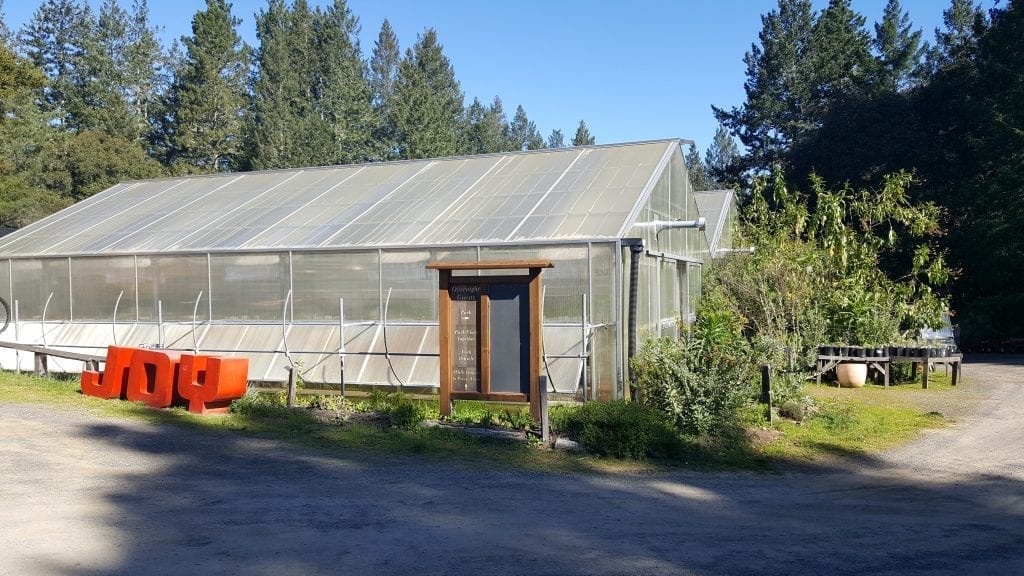
Here’s the outdoor nursery, complete with waist-high browsing tables and a protective overhead bird netting.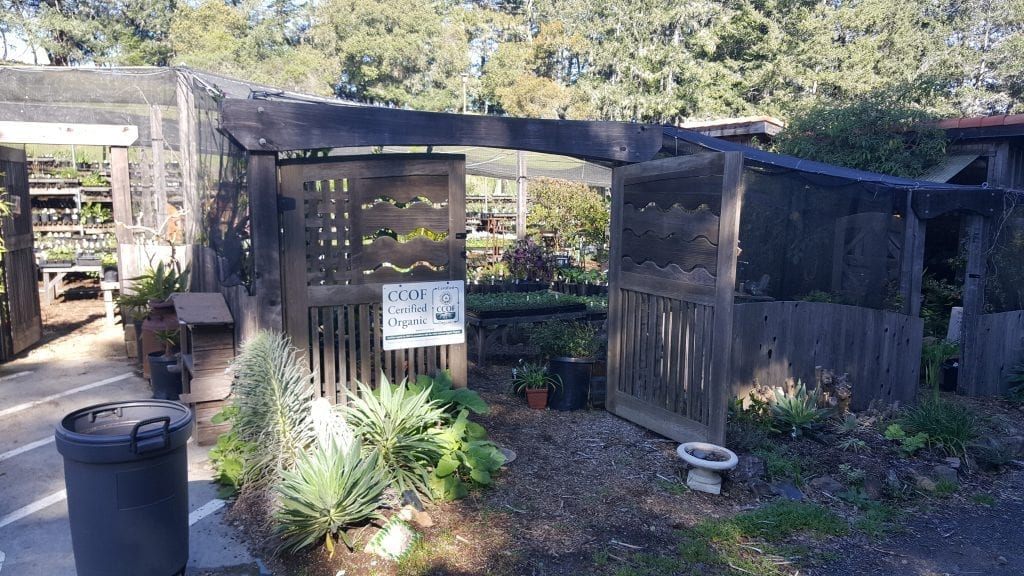
This was were we were primarily working transplanting plants from small containers to bigger containers with the excess fill dirt piles.
The volunteer coordinators pulled us from our nursery-prep work so we could make it to lunch on time. That’s when we all headed over to the heart of campus toward the community kitchen, and I got a quick walking tour of some of the buildings, new construction and a few of the residences.
This is the community residents’ trailer complex, with a couple of travel trailers and a bus, which backs up to the nursery.
This is the main storage and tool workshop for the community, and also features a basketball hoop!
These are some of the guest house buildings and yurts that are rented out for retreats or large groups of guests.
This is the architectural drawing and layout of OAEC’s New Meeting Center – with a “lounge, bathrooms, spacious courtyard and deck with panoramic views.”
Here’s the progress of the OAEC New Meeting Center as of date when I visited.
Across from the construction is the current OAEC offices, slightly down hill from where they keep the goats and chickens.
Like any good community, OAEC has a cob bench with directions, signage and upcoming educational courses flyers.
Not only is the community kitchen and dining hall beautiful on the outside, it features two outdoor grills and a large wood-fired brick oven!
We gathered in the kitchen with other residents, interns and volunteers to circle up and announce the food. This was by far the healthiest meal I had eaten since leaving Lost Valley. The all vegetarian meal had been grown onsite, and cooked by the full-time kitchen staff – a unique position I hadn’t seen in a community yet, but with their high volume of people for programs and events, they needed full-time kitchen staff.
I filled my plate and joined everyone at the row of picnic tables under the shade trees outside. The conversations were lively, and one of the volunteers bought an OAEC cookbook and flipped through it with amazement.
I was cutting close on my timeline to leave for my next destination at Frongsong Cohousing, so I thanked the nursery volunteer coordinators for having me and asked if I could walk through the lower part of the campus on my way out. I was given the green light and explored the hill-side gardens, permaculture educational gardens and other outdoor classrooms.
The view of the OAEC gardens from the bottom of the hillside looking up toward the guest houses.
The middle of the hillside gardens, on the trail to the outdoor classrooms and theater stage.
Here’s a picture of the outdoor classroom, where the permaculture students just finished one of their wild-crafting classes.
Here is the outdoor theater, which is commonly used for performances, plays and other skits. (YouTube Playlist)
Here’s a clip of the guest residences on my way back to the plant nursery.
One last view of the hillside gardens from the top trail looking down toward the outdoor theater.
Here’s a final clip of OAEC’s nursery and greenhouse before I left for my next destination.
More about Occidental Arts & Ecology Center (OAEC):
- Visual Tour of OAEC’s Facilities Webpage – (Includes an aerial video tour)
- OAEC’s Projects & Partnerships – The organization has developed a highly diverse yet interrelated suite of projects and partnerships that address the root causes of some of the urgent ecological, economic, and social crises of our time. See more about projects here.
- The Resilient Schools Program supports schools and school districts in designing long-term ecological, economic and bio-cultural resilience into their curricula, campus and community. OAEC believes in the power of educational institutions – incubators of the next generation of leaders and systems designers – to serve as community hubs for ecological literacy, intergenerational engagement and cross-sectoral collaboration of interdependent stakeholders co-designing their own thriving community in the context of climate disruption.
- Resilient Community Design uses a developed, theoretical framework paired with down-to-earth, hands-on techniques that can be used by any group of land-based people according to their needs and their place. User-driven participatory methods are at the root of the approach because they believe all people have the right, the knowledge, and the ability to best determine an ecologically regenerative, economically viable and socially just future for themselves

